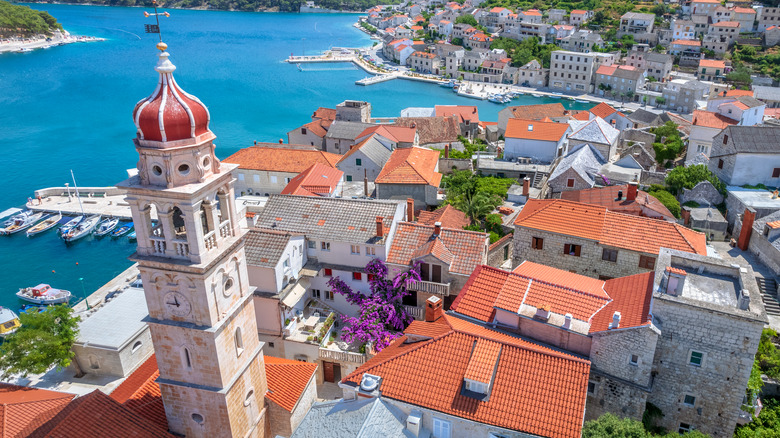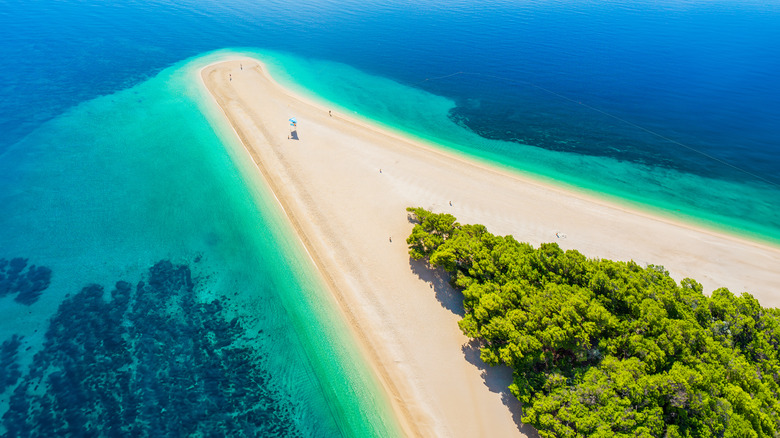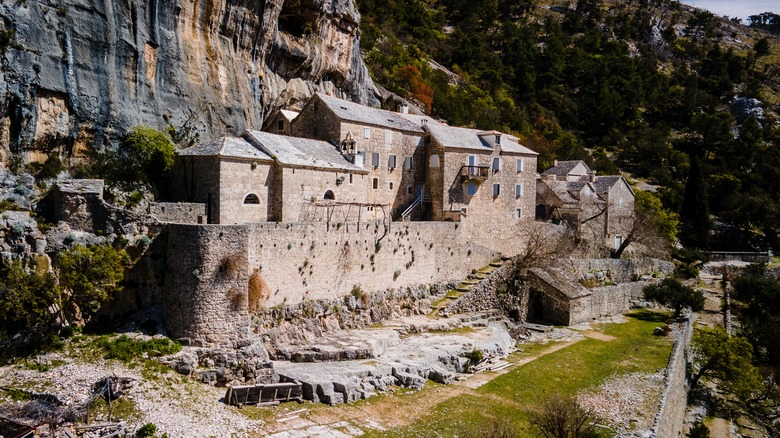This Underrated Croatian Island Is Like A Dreamy Seaside Italian Getaway At A Lower Price
It's not difficult to see the Italian influence on parts of Croatia, especially when you consider the Dalmatia region was under control of the Venetians during the Renaissance. Croatian gems like the ever-popular Split and Dubrovnik are solidly on the mainstream tourist radar, while the islands off the west coast also continue to grow in popularity. Take, for example, Brač Island, a scenic getaway that offers one of the most beautiful beaches in Europe, quaint villages, a coastline along the Adriatic Sea, wine, seafood, and pasta. If you were blindfolded until arrival, you might not even realize you've left Italy.
While perhaps not undiscovered, Croatia is a country that's still revealing its true colors in a variety of ways. For example, travel writer and host Rick Steves says he loves the Istrian Peninsula region for its food, wine, and history. Clearly determined to cater to the tourism boom and specifically the draw of its islands, Croatia saw its first five-star resort opened on Hvar in 2019. However, even with the influx of interest in the region, the lower costs and remaining Italian influence still make it an exceptional place to visit. To see the best example of all these things, head to the island of Brač.
Visiting the Croatian island of Brač in the Adriatic Sea
Accessed by a ferry from either Split or Makarska, Brač is easy to reach from anywhere in the region. While it may not be as well-known as the flashy island of Hvar, Brač doesn't exactly fly under the radar, either. It's famous for several food products, and as the largest Dalmatian island, it has plenty of space for cobblestone streets in the town of Bol, quaint villages, accessible beaches, historical architecture, and fresh meats — all reminiscent of Italian offerings.
Unlike the limited coastline of the nearby Balkan country of Bosnia and Herzegovina, visitors to Brač Island can enjoy beaches on every side of the island. The seaside essence means plenty of opportunity to scuba dive, kayak, windsurf, kitesurf, or explore shipwrecks. The most renowned beach is called Zlati rat, a rocky spit that juts into the postcard-perfect waters of the Adriatic Sea. Due to the unique shape and color of the pebbles, it's also known as the Golden Horn. Other notable beaches around the island include Murvica, Draceva, Slatina, Mali and Veliki Zagradac, Cicco, and Vela Planica.
When it comes to funding your time in Brač, note that prices have been inching up as tourism increases. While most restaurant, grocery, and lodging expenses will be less than those in Italy, you'll find better deals by avoiding the main tourist areas and visiting during the off season.
Sites and foods of Brač
The cityscapes reflect the style of architecture and infrastructure of Brač's Adriatic neighbor due to the prevalence of a high-quality white stone, a material that has been used since the area was home to the Romans. In fact, Brač stone is so famous, it was even incorporated into the White House in Washington, DC. To better understand its cultural relevance, visit the Pucisca Stonemasonry School – one of the last schools in Europe still teaching manual stone carving techniques.
As a seaside getaway destination, Brač also delivers on food and drinks sourced from the region. Thanks to the history of Italian oversight, the island is landscaped with olive trees, and prize-winning olive oil is produced here. In Mediterranean-style restaurants, the Italian influence can be seen through pasta, seafood, and citrus fruits. Brač is also known for regional dishes that incorporate locally made sheep cheese and roasted lamb.
While the main tourist area is in the town of Bol, you can (and should) also visit Supetar, Postira, Milna, and Pucisca to take in the historical element of this island that has hosted inhabitants since Neolithic times. For example, in addition to the Olive Oil Museum in the island's oldest village of Škrip, you can visit the Pustinja Blaca (The Blaca Hermitage), a monastery complex hidden in a rocky hillside that dates back to the 16th century. It also delivers copious hiking opportunities around the peak of Vidova Gora, the Adriatic's highest point.


